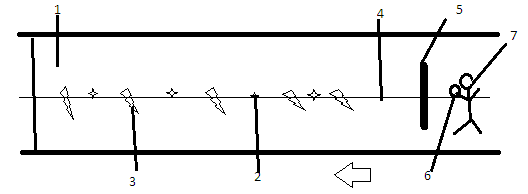
| HOME | ABOUT | DAILY LIFE | LANGUAGE | HISTORY | RESOURCES | PUBLICATIONS | DISCUSSION BOARD | CONTACT US |
| Kasia |
|
A traditional Mixtec game described and explained by Marcos A Cruz Bautista (San Juan Mixtepec, Oaxaca) This is a traditional game that can be played by children, young people and adults. It is played during the rainy season when it is easier to gather the items necessary for play. Kasia is highly entertaining and very easy to play because it requires little equipment. It fosters children’s psychomotor and intellectual development, particularly math skills, as payers much add, subtract, multiply and divide. Kasia play is nearly extinct, however. Only a handful of people remain who know its rules, and they are of an age that they no longer play it. Children rarely play it, as Kasia has been replaced by games and toys from other cultures, such as yoyos, marbles and tops, etc. Alternative Ways to Play Kasia Kasia can be played by individuals or in teams. When played by individuals, each player plays for him/herself alone. All participants supply goodies to be used as prizes. An individual player keeps any prizes s/he wins during play for him/herself. When played collectively, players form teams of two to six players. When played this way, all players contribute goodies to use as prizes, and after the game is over; teams divide the goodies up equally among all the team members. Resources Needed to Play 1. A flat playing surface, such as a soccer field, a flat top, patio, or driveway.1 The surface should be hard so that the throwing disk can “skip,” moving easily across the playing surface. Trace a rectangular-shaped playing area of approximately 3 meters (9 3/4ft) in length by 80 centimeters (32 inches) with lime or chalk. Draw a second horizontal line at a distance of 1 meter (39 inches) from one of the ends. 2. A minimum of two individual players or two teams of up to six members can play. 3. Each player should bring two thin, flat, round or mostly round stones. The disk-shaped stones should measure about 10-12 centimeters (4-5 inches) in diameter, although the size of the disk varies according to the age/size of the player. Younger children should use a disk of smaller diameter, one they can easily throw from one end of the playing area to the other. 4. To be eligible to play, a player should gather and bring the agreed upon number of goodies to the playing area. Items traditionally used as prizes are pecans, brazil nuts and sugar cane shoots. 5. At the one meter line, players or another designated person line the goodies up in a row, one behind the other, leaving about 20 centimeters (8 inches) between them. 6. To start the game, one of the players stand behind the horizontal throwing line and throws her/his disk toward the goodies on the playing field, trying to make it touch or brush the greatest possible number of goodies. Each goody the disk touches is a prize for the thrower. 7. When the game is played in teams, players from each team alternate turns, until all the goodies have been won and no more remain on the playing field. The teams then divide up the goodies equally among their players.

1.Playing field 1Marcos Cruz suggests roadways as a possible playing surface. In many areas of the Mixteca, there is almost no traffic, so this would not be an unsafe idea in that in that environment. Suggestions more appropriate to conditions in the US are offered here. |